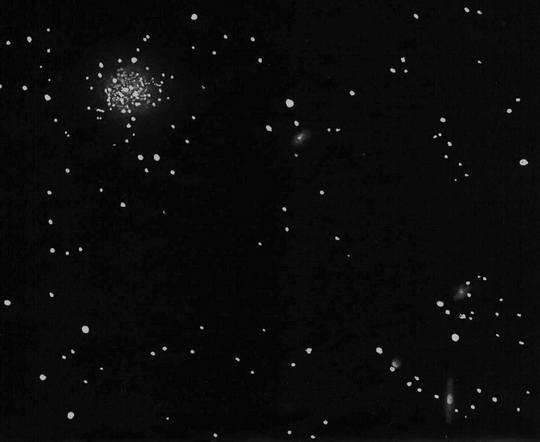These are our observations of Globular cluster
-
Messier 15 in Pegasus
Messier 15 is a bright and beautiful globular cluster in the constellation of Pegasus. It was discovered by the French astronomer Jean-Dominique Maraldi on 7th September 1746 and he reported it as a bright nebulous star composed of many stars. Messier observed it on 3rd June 1764 and added it to his list of 'not a comet' objects with the remark that it appeared as a round nebula, without a star. Other early observers included William and John Herschel and they commented on its brightness and unusual beauty.
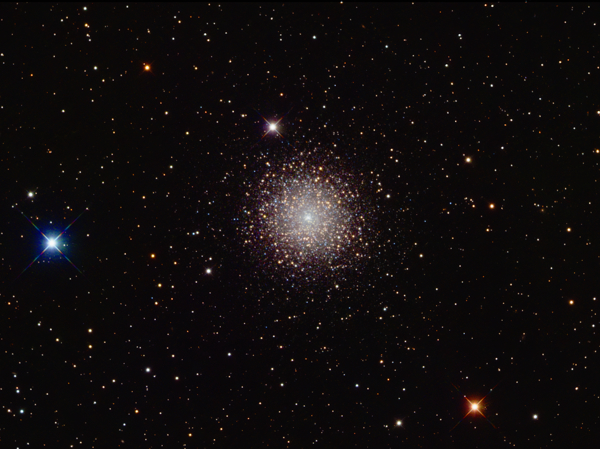
This image of the globular cluster Messier 15 was provided by David Davies and taken from Cambridge in the UK. To see more of David's work please visit his Flickr Photostream. Click on the image for the larger version. Image Details
I captured this image during the short darkness of 28th July as part of testing the imaging software N.I.N.A. It comprises just 10 x two-minute subs of red, green and blue sub-frames. The short exposures have ensured that the core is not over-exposed and the planetary nebula Pease1 can be discerned just north of the centre.
- Telescope: 8" Ritchey-Chretien with x0.7 reducer.
- Camera: QSI 683.
- Mount: Skywatcher EQ8.
David Davies - (20 August 2020).
-
Globular Clusters in Coma Berenices
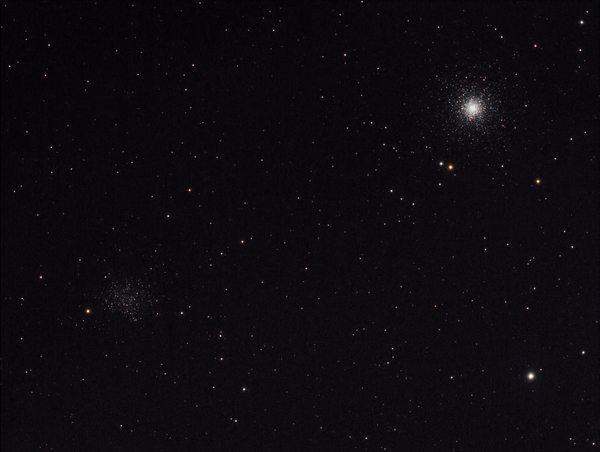
This image was provided courtesy of David Davies from Cambridge in the UK. To see more of David's work please visit his Flickr Photostream. Here is the product of my last successful imaging session before the autumnal rains started.
M53, NGC 5024, in Coma Berenices is at top right of this image. It is around 60,000 light years from us and in absolute terms is larger than M13, but appears smaller and fainter due to its greater distance; the 25 brightest stars have an average magnitude of 15.
To the east of M53, at bottom left, is NGC 5053. This is classified as globular cluster but it has a low star density and low metallicity stars; it is around 53,000 light years from us.
This image was captured in early May under brightening night skies with a 107mm APM refractor and QSI 583 camera. It is a simple RGB image of 30 minutes each colour in 2-minute subs.
David Davies - (6 June 2017).
-
A Morning with Galaxies and a Cluster
Here are a few observations from the morning of April 27th 2017. My primary aim was to follow up on an observation that I made with Andrew Robertson, Owen Brazell and Callum Potter at Kelling using Andrew's driven 24" Dobsonian of the NGC 5222 group in Virgo.
My effort was reasonably successful, however the field of view using the Watec camera is small and I couldn't match the field of the eyepiece view.
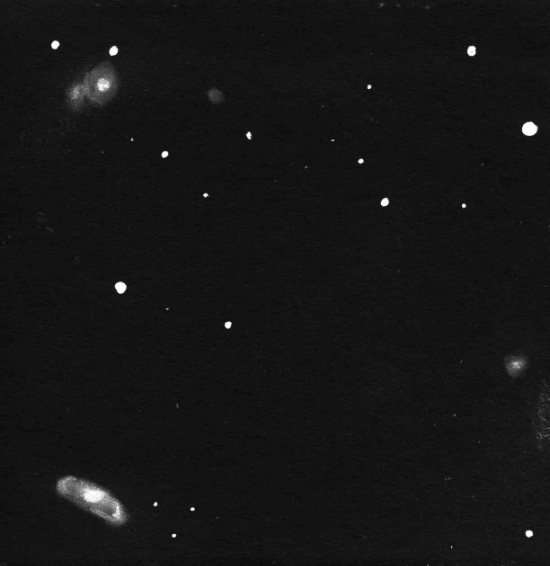
Sketch of NGC5222 by Dale Holt from his Chippingdale observatory in Hertfordshire. After this I took the chance of going low into Ophiuchus and getting a sketch of M12 which was missing from my Messier sketch archives. I used the 6" triplet refractor and older uncooled Watec video camera as globulars being very bright tend to saturate the camera using the big mirror.
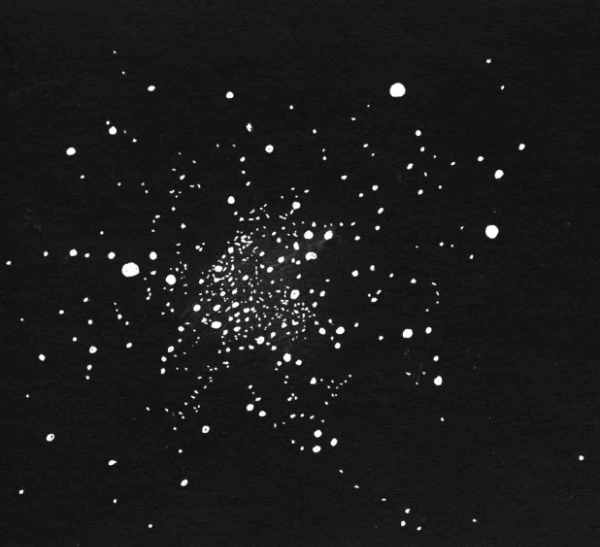
Sketch of M12 by Dale Holt from his Chippingdale observatory in Hertfordshire. After I had sketched M12 I moved back to the 20" and searched the cluster finding 3 tiny faint galaxies in the outer fringe, fascinating. Unfortunately I haven't been able to id them. (Ed. This image shows these galaxies nicely on the lower left edge of M12.)
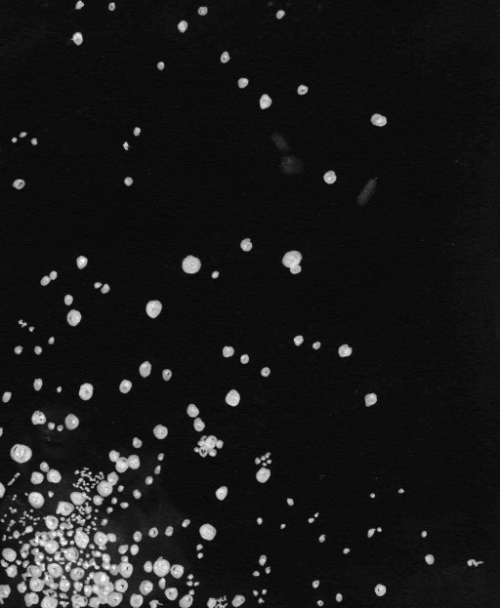
Close up sketch of a group of faint galaxies on the edge of M12 by Dale Holt from his Chippingdale observatory in Hertfordshire. Dale Holt - (2 May 2017).
-
An observation of M92 in Hercules
Here is a sketch of M92 from last night (6th August 2016, 21:39 UT) under a clear sky with no moon during Nautical twilight. Observing with a 12" f/5 Dobsonian with 15 mm lens from Moonfish. Pencil on cartridge paper. North is to the left in the sketch.
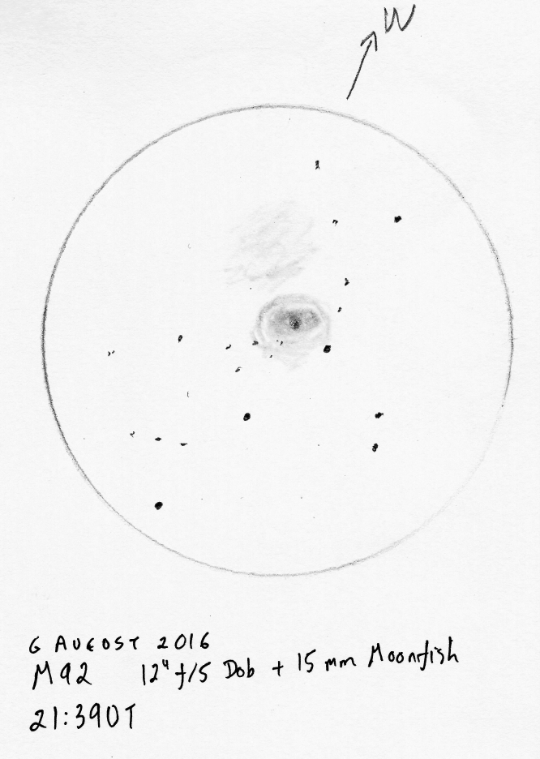
Visually M92 seems somewhat elliptical with the major axis roughly north-south. There is a distinct and unresolved core and a visual impression of concentric rings. There seemed to be an extended light source to the west only. I suspect this was some sort of optical illusion rather than anything to do with M92.
Rob Peeling - (7 August 2016).
-
NGC 7006 and the surrounding galaxies
Another of my compilation observations taken from the conversations on our Yahoo! Forum about the Globular Cluster, NGC 7006, and the faint galaxies that share the field of view.
Dale Holt's observation
Sketches of faint galaxies, some of them I haven't identified around the small GC NGC 7006 in Delphinus. These video assisted observations were made following inspiration of Ken Hewitt-Whites, going deep in the latest addition of S&T magazine.
John Vickers' observation
- N7006 GC Del
- RA-Dec 21 01 29.2, +16 11 15
- Designation NGC 7006, Cald 42, GCL 119, IAU 2059+160.
- Brightest star visual magnitude: 16.-m.
10.6m 2.8' 12.1SB. Extremely faint stars. A very remote loose group of 7 small, extremely faint galaxies is ~5.7' SW. 10.7m reddish star 7.4' SSE.
Dreyer Bright, pretty large, round, gradually brighter middle.
Other Globular cluster, mottled. Very difficult to resolve. Contains 71 observed variable stars.
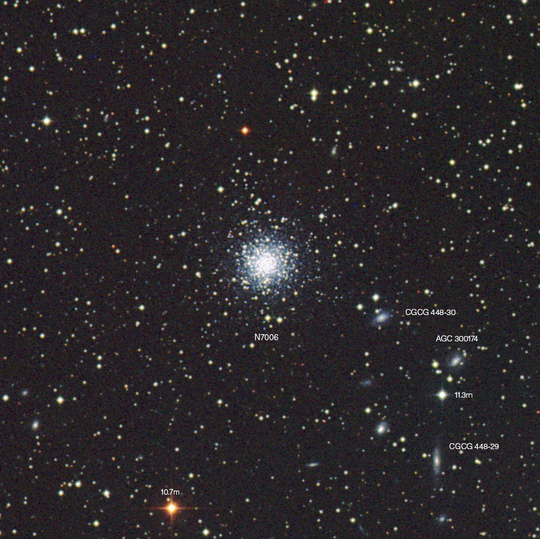
This is a POSSII combined IR-Red-Blue labeled image of N7006 from the BRO database. With those faint galaxies labelled.
